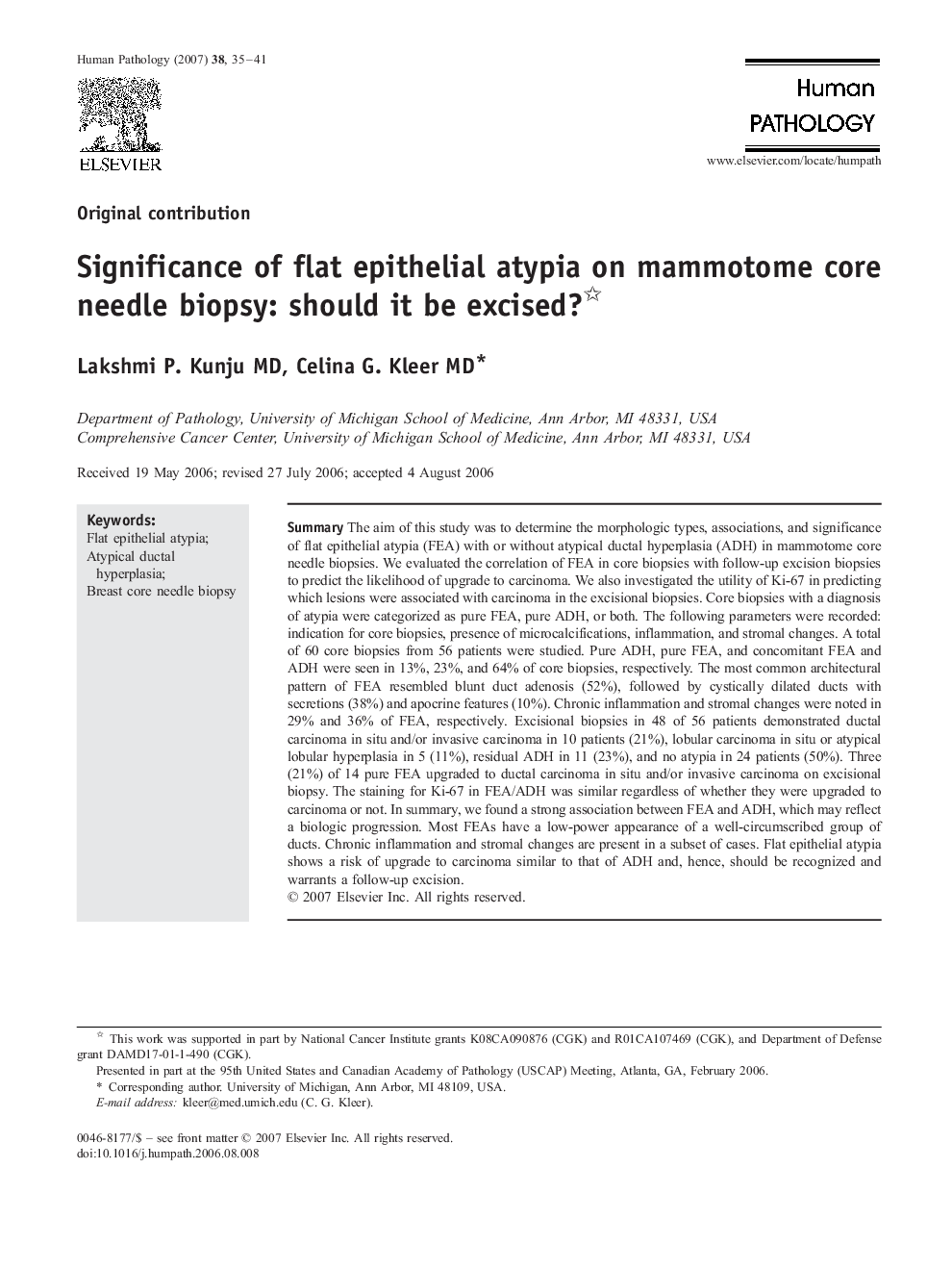| Article ID | Journal | Published Year | Pages | File Type |
|---|---|---|---|---|
| 4135538 | Human Pathology | 2007 | 7 Pages |
SummaryThe aim of this study was to determine the morphologic types, associations, and significance of flat epithelial atypia (FEA) with or without atypical ductal hyperplasia (ADH) in mammotome core needle biopsies. We evaluated the correlation of FEA in core biopsies with follow-up excision biopsies to predict the likelihood of upgrade to carcinoma. We also investigated the utility of Ki-67 in predicting which lesions were associated with carcinoma in the excisional biopsies. Core biopsies with a diagnosis of atypia were categorized as pure FEA, pure ADH, or both. The following parameters were recorded: indication for core biopsies, presence of microcalcifications, inflammation, and stromal changes. A total of 60 core biopsies from 56 patients were studied. Pure ADH, pure FEA, and concomitant FEA and ADH were seen in 13%, 23%, and 64% of core biopsies, respectively. The most common architectural pattern of FEA resembled blunt duct adenosis (52%), followed by cystically dilated ducts with secretions (38%) and apocrine features (10%). Chronic inflammation and stromal changes were noted in 29% and 36% of FEA, respectively. Excisional biopsies in 48 of 56 patients demonstrated ductal carcinoma in situ and/or invasive carcinoma in 10 patients (21%), lobular carcinoma in situ or atypical lobular hyperplasia in 5 (11%), residual ADH in 11 (23%), and no atypia in 24 patients (50%). Three (21%) of 14 pure FEA upgraded to ductal carcinoma in situ and/or invasive carcinoma on excisional biopsy. The staining for Ki-67 in FEA/ADH was similar regardless of whether they were upgraded to carcinoma or not. In summary, we found a strong association between FEA and ADH, which may reflect a biologic progression. Most FEAs have a low-power appearance of a well-circumscribed group of ducts. Chronic inflammation and stromal changes are present in a subset of cases. Flat epithelial atypia shows a risk of upgrade to carcinoma similar to that of ADH and, hence, should be recognized and warrants a follow-up excision.
